Island of Porto Santo

The Island of Porto Santo is a haven of gold and blue, where the pace of everything is tranquil, inviting relaxation and rest.
Right in the Atlantic Ocean, Porto Santo, 11km long and 6km wide, has been long dubbed the Golden Island, for its extensive, stunning 9km-long beach of fine and silky sand, bathed by turquoise waters. The climate in Porto Santo, mild all year round, with a sea temperature ranging between 17ºC and 22ºC, makes this island always attractive, even in the winter.
The Portuguese navigators João Gonçalves Zarco and Tristão Vaz Teixeira arrived on the Island of Porto Santo in 1418, the first of the Portuguese discoveries overseas. Having been sent off their course by strong winds while exploring the western coast of Africa, Porto Santo provided them with a safe haven, hence its name which means Blessed Harbour. In 1446, Henry the Navigator appointed Bartolomeu Perestrelo as Governor of the island, which is one of its claims to fame: Perestrelo’s daughter went on to marry Christopher Columbus, who spent some time on the island preparing for his great voyage of discovery to America. Today, it is possible to visit the 15th century house where Christopher Columbus is said to have lived. It is in Vila Baleira, and on display are portraits of Columbus and maps showing the different sea routes that he followed.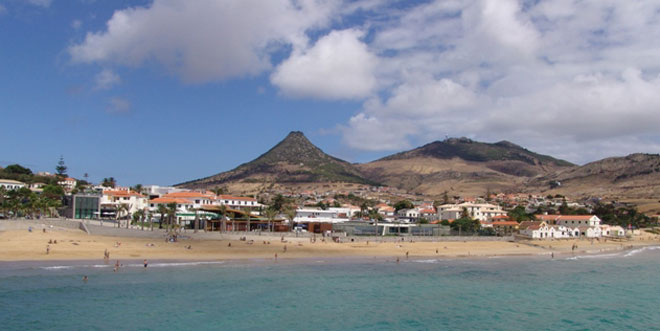
Despite its small size, the island’s capital, Vila Baleira, has a number of attractions. The city is centred around its main square, the Largo do Pelourinho, and the Infante Gardens. The palm tree- and bougainvillea-lined streets are ideal for pleasant, relaxing strolls. There is no shortage of restaurants, providing many opportunities for tasting the island’s specialties: beef kebab on a bay skewer, basted with garlic butter, or the famous bolo do caco (bread baked on a piece of tile), the bread made with yam and also served with garlic butter. A stroll around the quay will offer you an opportunity to admire the traditional crafts, made with local materials such as shells, palm fronds, canes and clay. If you care to have a taste of the island’s history and culture, besides the house-museum of Christopher Columbus, the beautiful tile panels in the neighbouring 17th century Church of Nossa Senhora da Piedade are well worth a visit.
On 23 and 24 June, Porto Santo comes to life for the Festas de São João (Midsummer Festival), in honour of St. John, the island’s patron saint. And the merriment continues in August with the religious festivities of Nossa Senhora da Graça, on the night of the 14th, of Nossa Senhora da Piedade, on the night of the 30th, and with the Festa das Vindimas (Grape Harvest Festival) at the end of the month. In September, the Columbus Festival celebrates the navigator’s stay and experiences in the Madeira archipelago, as well as the whole odyssey of the Discoveries. The Christmas and New Year’s Eve celebrations continue until Twelfth Night, when evening events include visits to the Lapinha (a nativity scene) and, on the evening of 15 January, the Santo Amaro celebrations.
But Porto Santo’s key feature is unquestionably its beach. Said to have curative powers, the sand and waters are rich in iodine, calcium and magnesium, which makes them highly beneficial for treating rheumatism and bone diseases.
You can try an anti-stress treatment in the Thalassotherapy Centre, or take a walk to Ponta da Calheta to exercise your body. You can also release stress in a more active way, by practising one of the many outdoor activities that the island has to offer: boat rides, recreational fishing, diving, windsurfing, kite surfing, water skiing, mountain biking or para-gliding. Golf lovers can also try a few shots at the Porto Santo Golf, designed by the Spanish champion, Ballesteros.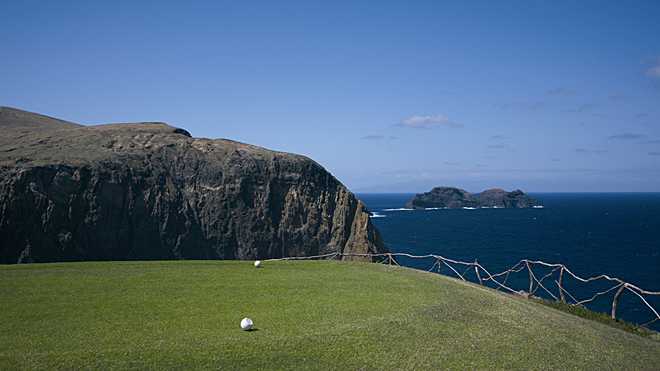
Alternatively, you can wander around the Island and discover the beauty of a landscape formed from successive volcanic eruptions, from one of several viewpoints: Portela, surrounded by windmills, Pedreira, on the Pico Ana Ferreira and, on the western tip of the island, the flower viewpoint with a view over Madeira and the Desertas Islands. Not to be missed is a climb to Pico do Facho, the highest point on the island at 517 metres, and Pico do Castelo from where you can glimpse the deep valleys and the islets which seem to have been “sown” all around.
If you’re with children, you can visit Quinta das Palmeiras (Palm Tree Farm) and enjoy its mini-zoo and mini-botanical garden, or you can see the Fonte da Areia islet and the erosion caused by water on the rocks. To recharge your batteries, have a picnic at the Morenos picnic spot, followed by a dive in the crystal-clear waters of the small Zimbralinho cove, a suggestion that the whole family will love.
To end the day, as you drink some fruit juice or a Poncha (sugar cane brandy and juice cocktail) on one of the various terraces by the sea, let yourself be lulled by the magical sound of the waves, and at dusk enjoy an unparalleled sunset.


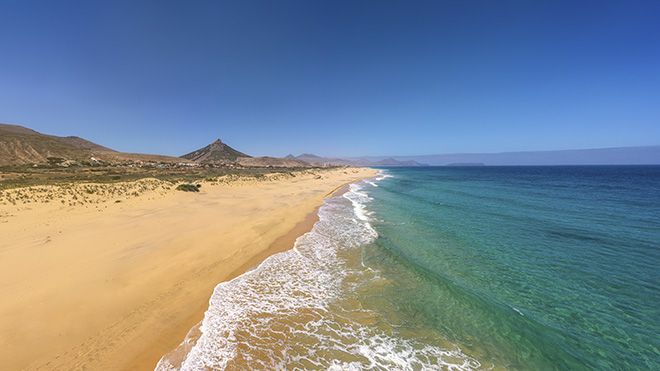








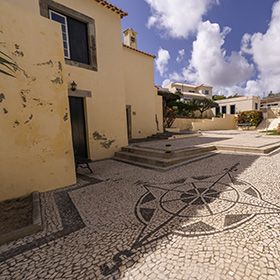
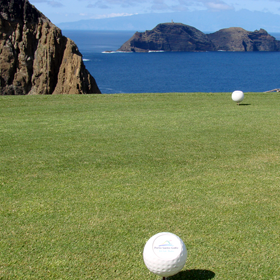
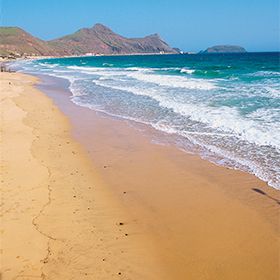
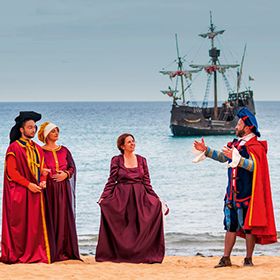

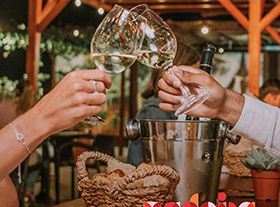
 Explore
Explore 
 Remember and Share
Remember and Share 


